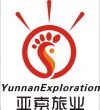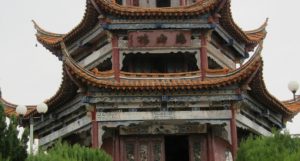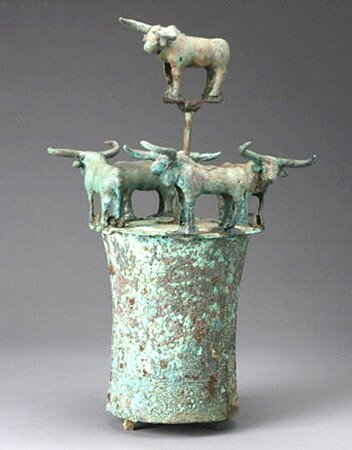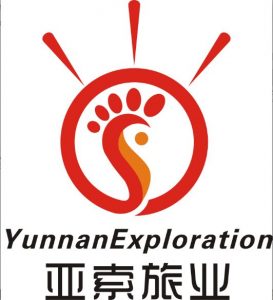
Ancient Dian Culture Park in Jiangchuan District, Yuxi

Attraction Overview
With Gushan孤山 island as the core area and relying on the profound ancient Dian bronze culture connotation of Lijiashan李家山 in Jiangchuan District江川区, the ancient Dian culture park has become a leading tourist scenic are in Fuxian lake after years of development, and a comprehensive tourism area integrating sightseeing and recreation.
Chinese Name: 江川区古滇国文化园
English Name: Ancient Dian Culture Park in Jiangchuan District, Yuxi
Type: Historical Park and Ancient Dian Culture
Best Time: April to October
Recommended Visiting Hours: Half a day
Opening Hours: All day
Ticket: 15 CNY
Address: Jianggu Highway, Jiangchuan District, Yuxi, Yunnan云南省玉溪市江川区江孤公路
Why is Ancient Dian Culture Park So Special?
Jiangchuan ancient Dian culture park江川古滇文化公园 is a national AAA level scenic area, the first “sleepless island” in Yunnan province and a provincial scenic area. It is located in China’s deepest plateau freshwater lake, Fuxian lake of Jiangchuan District江川区. The transportation to ancient Dian culture park is convenient, and annual average temperature there is about 20 ° C. Gushan mountain孤山 is located in the west water area of Fuxian lake and is the only mid-lake island in central Yunnan. The island is spring all year round, the air is fresh and the lake is blue and bright. With Gushan孤山 island as the core area and relying on the profound ancient Dian bronze culture connotation of Lijiashan李家山 in Jiangchuan District, the ancient Dian culture park has become a leading tourist scenic area in Fuxian lake after years of development. It is a comprehensive tourist area integrating sightseeing, conference leisure, as well as fitness and vacation.
Where is Ancient Dian Culture Park?
The ancient Dian culture park is located in Fuxian Lake of Jiangchuan District, Yuxi City, Yunnan Province. It is also known as Gushan island孤山岛, is the only island on the whole Fuxian lake.
Features of Ancient Dian Culture Park
There are complete tourism facilities in ancient Dian culture park. The one package service integrates adventure, odd, serene, elegance, accommodation and recreation, so that people can be in a quiet and elegant place and escape from the noisy world. The culture park takes fully advantage of precious natural landscapes, rich and unique fish culture, human resources with long history, fresh and natural rural scenery.
The ancient Dian culture park, taking the ancient Dian bronze culture as the soul and the scenic Gushan island as the spatial carrier, introduced the profound and splendid ancient Dian culture into the tourism development. In virtue of natural resources of Fuxian lake and Gushan island, ancient Dian bronze culture was displayed. At the same time, with the help of the ancient Dian bronze culture, cultural connotation of the culture park tourism development has been increased and enriched. The natural landscape and human landscape, which are both wild and artificial, reflect the main features and functions of the culture park.

History of Ancient Culture Park
More than 2,000 years ago, there existed the ancient Dian kingdom with splendid culture in the region of Yunnan, centering on “two mountains(Lijiashan李家山, Shizhai mountain石寨山)” and “two lakes(Dianchi and Fuxian lake)”, among which the Lijiashan bronze culture was the main representative of the ancient Dian culture. The ancient Dian culture park was originally named Gushan孤山 scenic area, which started in Tang dynasty and flourished in Song dynasty superior to Ming dynasty. At the end of the Ming dynasty, eight halls, five lofts, three pavilions, a temple, a nunnery and a pagoda are built on the island. In 1979, it was taken over by the institute of biology, Chinese academy of sciences, and became the well-known monkey island. In 1988, the Gushan scenic area was rebuilt, with trees and flowers planted and new pavilions built. It was opened to the public in 1993. In 2004, it was renamed and registered as “Jiangchuan ancient Dian culture park江川古滇文化园”.
The golden seal of Dian King
The golden seal of the Dian King was unearthed in the tomb of the Dian King Changqiang at Shizhaishan Hill on December 28, 1956.
It was a sensational archeological discovery in Yunnan Province for it strongly proved that the Dian Kingdom in the legend really existed in the Dianchi Lake area 2000 year ago and politically related with the Han Dynasty because the golden seal was presented to the Dian King by Emperor Hanwudi in the West Han Dynasty (109BC).
The archeological discovery of the Dian Bronze wares are of many kinds: cowry containers (bronze drums), musical instruments, ritual vessels, weapons, farming tools, textile tools, articles for daily use, decorative appliances and so on, which were of Dian cultural ecstasy or essence and strong Yunnan ethnic styles. Showing the masterful casting technique of modeling, filling model casting, dewaxing model casting and artistry and the skilled use of the bronze alloy as well as the successful experience, Dian Bronze gained high position in the four bronze cultures of the world including the Greek bronze culture, Central China bronze culture, Dian bronze culture and North China prairie culture.
The archaeological circles traditionally refer to the bronze culture which appeared in the Dianchi Lake area from the Warring States period to the Eastern Han Dynasty as “Dian Culture” and named it “the Culture of Shizhaishan Type” because it was discovered first at the Shizhaishan Hill in Jinning County. The bronze exhibits in Kunming City Museum are just the the bronze culture in the Dianchi Lake area, an excellent art among the splendid Chinese bronze cultures of the profound historical and cultural background.
With Dianchi Lake area as the centre, the Dian bronze cultures are widely distributed in central Yunnan including Qujing to the east, Yuanjiang to the south, Jinshajiang River to the north, and Lufeng to the west, and Kunming, Jinning, Chenggong, Jiangchuan, Anning, Lufeng, Shilin, Luliang and Qujing etc are all involved. There are in all 14 counties and over 60 spots included, and the most important spots are the Shizhaishan Hill of Jinning County, Lijiashan Hill of Jiangchuan County, Batatai Terrace of Qujing, Tianzimiao of Chenggong, Shibeicun Village of Chenggong and Taijishan Hill of Anning.
The bronze wares excavated
Cowry containers, cowry are the ringed sea shells from the tropical coast of the Indian Ocean and Pacific Ocean, which means that the Dian ethnics in the inland Yunnan had already exchanged with the peoples along the coasts and they took the sea shells as media currency and especially the ruling class made the bronze container to store the cowries as the plus values. We can say the bronze cowry containers are the forefather of China’s banks and also the forefather of the world’s banks!
The containers
The containers are of different shapes, some are drum-shaped, some are tubular, and some are irregular.

The lids with five cattle, one is relatively big and other four are standing around the edge with tails and heads linked. The bodies have feather men boating patterns and water birds and cattle carved. The cattle were the sign of the property, which displayed the chase and desire of the owners for wealth. There are cast 7 figurines on the body with high air bun, bare feet, with the gong touching the ground and spears on the shoulders–which means there was a well-armed and well-trained army in the Dian Kingdom.

The drums
The drums usually used as the cooking pots first and then used as drums when battles drumming for fight.

Yunnan is the province where the bronze drums were widely discovered. The bronze drums were not only the musical instruments, but also the ritual vessels and valuable devices, only the royal families and the higher-ups could possess. The 1,400 bronze drums collected in China are classified into eight types of different drums such as “Wanjiaba Type”, “Shizhaishan Hill Type”, “Lengshuichong Type”, and “Majiang Type” etc. The common characteristics of these bronze drums are bronze-made, flat tops and curve bodies, empty inside and no bottom, 4 hangers on the sides.
The drums unearthed at Tianzimiao Temple of Chenggong were the relics of the Warring States period and one of the two, the surfaces had the sun patterns and the main halo were four flying herons around the sun pattern (this is the evidence that there were ever since lots of herons in the Dianchi Lake area), there were round point patterns and triangle tooth veins with round points on the outer halo and this drum was unearthed from the biggest tomb in the central part of the site, and this implied the preciousness of the bronze drum during the Warring State period, the prominent social status and the high nobility of the host. It is noticeable that the plain drums without patterns were the relics of the Spring-Autumn period.

The buckle ornaments
The buckle ornaments were the characteristic artifacts among the Dian bronze wares and usually used as ornaments. They are, by their shapes, rectangular, circular and irregular; while by the casting technology, they are hollowed carvings,mosaic and relief and so on. But any shape or any technology, there must be a hook welded on the back to buckle it on the clothes or on other things.


The weapons
The weapons are the bronze wares mostly unearthed in the Dianchi Lake area, more than 70 pieces were unearthed in Tomb 71#, which are dagger-axes, spears, swords, battle-axes, axes, arrowheads, crossbows, maces and so on.

The golden seal of Dian King shows the political status of Dian in the West Han Dynasty;
The cowry containers show the economy of Dian Kingdom;
The bronze reed pipe shows the musical history so long and ancient;
The bronze horn pillow with massage function shows the medical science of the time;
The cattle and tiger table shows the ritual ceremony of Dian society;
The bronze cattle heads show natural religion and worship of the time;
The model house shows the architecture of Dian Kingdom;
The bronze figurines show the clothes style and the head ornament of Dian people which we still can see among the local ethnic people.
Well, with a lot of information of Shaizhaishan Hill and Dian Kingdom, I hope a visit to the Shizhaishan Hill will be fruitful.
Nearby Attractions
1. Lijiashan Bronze Museum李家山青铜博物馆
Located in Jiangchuan District, Yuxi City, south of Kunming, Lijiashan Bronze Museum is about 110 kilometers away from Kunming. Lijiashan Bronze Museum is outstanding cultural relic of national treasure level and a miracle in Chinese bronze culture. These bronze wares not only have historical origins with the bronze culture of central plains and northwest China, but also have distinct national characters of frontier areas. It is of great value for us to study the history of nationality, agriculture and animal husbandry, metallurgy, fine arts, folk customs and so on in ancient China, especially in ancient Yunnan.
2. Xingyun Lake星云湖
Xingyun Lake, located at 1 kilometer from the north of Jiangchuan District, Yuxi, Yunnan Province, is commonly known as Langguang Sea浪广海 or Jiangchuan Sea, with a surface area of 34.7 square kilometers. It is rich in silver carp and Wuchang fish, but it is the most famous for its bullhead fish. Xingyun Lake is a natural fish farm with beautiful scenery around it.
3. Fuxian Lake抚仙湖
Fuxian Lake stretches out through Chengjiang, Jiangchuan and Huaning Counties in Yunnan Province, covering an area of 212 square kilometers. The lake is the third-largest lake in Yunnan, after Dianchi Lake and Erhai Lake. Also it is the deepest lake in Yunnan with 155 meters of its greatest depth. The lake is also the third-deepest fresh water lake in China, after Tianchi and Kanas Lake. It belongs to Nanpan river system. The lake is gourd-shaped with 1053 square kilometers runoff area.

How to Get There
Tourists have two ways to get to Ancient Dian Culture Park, long-distance bus and train.
1. By Long-distance Bus
You can take midibus from Kunming East Bus Station to Jiangchuan District. It takes about 2 hours to take the long-distance bus. It is about 20 kilometers from Jiangchuan bus terminal to Ancient Dian Culture Park, takes about 30 minutes.
2. By Train
If you want to take train, you should go to Yuxi station first, and then take the minibus or taxi to Ancient Dian Culture Park of Jiangchuan District. You will spend about 1 hour and 15 minutes on the train. The lowest ticket price is CNY 16.5. Then you will arrive at Ancient Dian Culture Park after 1 hour drive from Yuxi railway station.
Accommodation Around Ancient Dian Culture Park
There are hotels around Ancient Dian Culture Park, it is not difficult to find a place to stay there.
1. Fuxian Lake Fuxian Residence澄江抚仙湖抚仙公馆
Address: Jianggu Highway, Gushan Village, Jiangcheng Town, Jiangchuan District, Yuxi玉溪市江川区江城镇孤山村江孤公路
Tel: 0877-8018999
Starting Price: 267 CNY
2. Yangguang Bandao Hotel抚仙湖阳光半岛度假酒店
Address: Fuxian Lake Residence Quarter, Xiaomagou Village Committee, West Bank of Fuxian Lake, Jiangchuan District, Yuxi玉溪市江川区抚仙湖西岸小马沟村委会仙湖岛小区
Tel: 0877-8098866
Starting Price: 155 CNY
3. Fuxian Garden Hotel玉溪抚仙花园酒店
Address: Jianggu Highway, Gushan Scenic Area, Jiangchuan District, Yuxi玉溪市江川区孤山风景区江孤公路
Tel: 0877-8552189
Starting Price: 97 CNY

Best Time to Visit
Enjoying a subtropical monsoon climate, tour is possible all the year round. With warmest sun, softest beach and clearest water, Fuxian Lake is a excellent place to escape the heat in summer. From April to October, you can enjoy the natural wonder of Fuxian lake, Black Carp Array青鱼阵.
Useful Travel Tips
1. Ancient Dian Culture Park is surrounded by the water area. The air is humid, when changes in the weather, the wind is stronger, be sure to keep warm.
2. Ancient Dian Culture Park is 100 kilometers away from Kunming and 32 kilometers from Yuxi.
3. The water in Fuxian Lake is deep, with 155 meters of its greatest depth. Therefore, if you are not good at swimming, please wear the life vest when you are doing some water sports.
4. Fuxian Lake is a plateau lake, and it is popular in summer. Ultraviolet ray is strong in summer, when you travel Fuxian Lake in summer, remember to bring sunglasses, sun cream, sunhat or other sunscreen products.

 7 Days GolfingTour
7 Days GolfingTour
 8 Days Group Tour
8 Days Group Tour
 8 Days Yunnan Tour
8 Days Yunnan Tour
 7 Days Shangri La Hiking
7 Days Shangri La Hiking
 11 Days Yunnan Tour
11 Days Yunnan Tour
 6 Days Yuanyang Terraces
6 Days Yuanyang Terraces
 11 Days Yunnan Tour
11 Days Yunnan Tour
 8 Days South Yunnan
8 Days South Yunnan
 7 Days Tea Tour
7 Days Tea Tour
 8 Days Muslim Tour
8 Days Muslim Tour
 12 Days Self-Driving
12 Days Self-Driving
 4 Days Haba Climbing
4 Days Haba Climbing
 Tiger Leaping Gorge
Tiger Leaping Gorge
 Stone Forest
Stone Forest
 Yunnan-Tibet
Yunnan-Tibet
 Hani Rice Terraces
Hani Rice Terraces
 Kunming
Kunming
 Lijiang
Lijiang
 Shangri-la
Shangri-la
 Dali
Dali
 XishuangBanna
XishuangBanna
 Honghe
Honghe
 Kunming
Kunming
 Lijiang
Lijiang
 Shangri-la
Shangri-la
 Yuanyang Rice Terraces
Yuanyang Rice Terraces
 Nujiang
Nujiang
 XishuangBanna
XishuangBanna
 Spring City Golf
Spring City Golf
 Snow Mountain Golf
Snow Mountain Golf
 Stone Mountain Golf
Stone Mountain Golf















